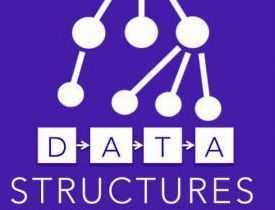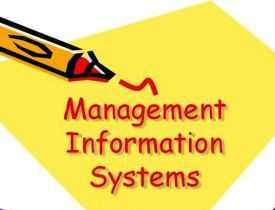Description
Course Name: Certificate in Computer Application & Data Structure
Course Id: CCADS/Q1001.
Eligibility: 10th Grade (High School) or Equivalent.
Objective: The Certificate in Computer Application & Data Structure course provides a foundational understanding of computer applications along with a strong focus on data structures, which are essential for programming and algorithm development. This course is designed to prepare individuals for roles that require proficiency in computer software usage and an understanding of how data can be efficiently stored, manipulated, and accessed.
Duration: Three Months.






Debit/Credit Card, Wallet, Paytm, Net Banking, UPI, or Google Pay.



• A soft copy (scanned) of your certificate via email within 7 days of examination.
• A hard copy (original with official seal and signature) sent to your address within 45 day of declaration of result.

Online Examination Detail:
Duration- 60 minutes.
No. of Questions- 30. (Multiple Choice Questions).
Maximum Marks- 100, Passing Marks- 40%.
There is no negative marking in this module.
| Marking System: | ||||||
| S.No. | No. of Questions | Marks Each Question | Total Marks | |||
| 1 | 10 | 5 | 50 | |||
| 2 | 5 | 4 | 20 | |||
| 3 | 5 | 3 | 15 | |||
| 4 | 5 | 2 | 10 | |||
| 5 | 5 | 1 | 5 | |||
| 30 | 100 | |||||
| How Students will be Graded: | ||||||
| S.No. | Marks | Grade | ||||
| 1 | 91-100 | O (Outstanding) | ||||
| 2 | 81-90 | A+ (Excellent) | ||||
| 3 | 71-80 | A (Very Good) | ||||
| 4 | 61-70 | B (Good) | ||||
| 5 | 51-60 | C (Average) | ||||
| 6 | 40-50 | P (Pass) | ||||
| 7 | 0-40 | F (Fail) | ||||







Syllabus:
Fundamentals of Computer Applications: Introduction to computers, Classification of computers, Hardware and software components, Operating system basics, File management and organization, Basics of computer networking, Internet and web applications, Computer security and cyber threats, Cloud computing fundamentals, Introduction to databases.
Programming Fundamentals: Introduction to programming languages, Basics of C and Python programming, Variables, data types, and operators, Control structures (if-else, loops), Functions and modular programming, Arrays and strings, Pointers and memory management, Object-oriented programming basics, Error handling and debugging, File handling techniques.
Data Structures – Introduction and Arrays: Concepts of data structures, Need and applications of data structures, Understanding arrays and types, Operations on arrays (insertion, deletion, searching), Sorting techniques (Bubble, Selection, Insertion), Searching techniques (Linear, Binary), Multi-dimensional arrays, Dynamic arrays, Matrix operations, Memory allocation in arrays.
Linked Lists and Stacks: Introduction to linked lists, Types of linked lists (Singly, Doubly, Circular), Operations on linked lists (insertion, deletion, traversal), Applications of linked lists, Introduction to stacks, Stack operations (push, pop, peek), Applications of stacks (expression evaluation, recursion), Implementing stacks using arrays and linked lists, Memory management in linked lists, Stack-based algorithms.
Queues and Trees: Concept of queues, Types of queues (Simple, Circular, Priority, Deque), Queue operations and applications, Implementing queues using arrays and linked lists, Introduction to trees, Types of trees (Binary, Binary Search Tree, AVL), Tree traversal techniques (Inorder, Preorder, Postorder), Applications of trees in computing, Heap and its operations, Expression trees.
Graphs and Hashing: Introduction to graphs, Graph representation (Adjacency list, Adjacency matrix), Graph traversal techniques (BFS, DFS), Applications of graphs, Spanning trees and shortest path algorithms, Concept of hashing, Hashing techniques and functions, Collision handling methods, Applications of hashing, Graph coloring and network applications.
After successful completion of the Certificate in Computer Application & Data Structure program, graduates acquire a solid foundation in computer operations and the core logic behind organizing, storing, and managing data efficiently. These skills are essential for careers in programming, software development, data management, and IT support.
🎓 Career Options After Certificate in Computer Application & Data Structure
1. Junior Programmer / Developer
-
Role: Write code using C/C++, Java, or Python, applying data structures like arrays, stacks, and linked lists to solve problems.
-
Salary Range: ₹2.5 – ₹5 LPA (fresher); up to ₹7 LPA with 2–3 years of experience
2. Data Structure Teaching Assistant (for Coding Institutes)
-
Role: Assist students in understanding algorithms, problem-solving techniques, and coding logic.
-
Salary Range: ₹2.2 – ₹4 LPA
3. IT Support Executive
-
Role: Provide basic software troubleshooting, install applications, maintain systems, and offer support for office tools.
-
Salary Range: ₹2 – ₹4 LPA
4. Back-End Developer (Entry-Level)
-
Role: Develop logic for server-side programming, apply data structures for database handling and application performance.
-
Salary Range: ₹3 – ₹5.5 LPA
5. Technical Content Creator / Coding Blogger
-
Role: Create tutorials, explain DSA concepts, and solve programming challenges for websites or ed-tech firms.
-
Salary Range: ₹2.5 – ₹5 LPA (can grow with experience or freelance basis)
6. Database Assistant / Junior DBA
-
Role: Assist in managing data storage, optimization, and indexing using basic knowledge of data structures.
-
Salary Range: ₹2.5 – ₹4.5 LPA
7. Software Testing Assistant
-
Role: Test programs using structured test cases, debug logic using knowledge of basic algorithms and data structures.
-
Salary Range: ₹2.2 – ₹4.5 LPA
8. Coding Instructor (for Schools/Institutes)
-
Role: Teach basic programming and DSA to beginners or school-level students.
-
Salary Range: ₹2 – ₹4.5 LPA
9. Competitive Programming Trainee (via EdTech Jobs)
-
Role: Solve algorithmic challenges, help students in live coding platforms.
-
Salary Range: ₹3 – ₹6 LPA
10. Freelance Coder / Web App Developer (with logic focus)
-
Role: Develop logic-heavy mini tools, calculators, apps where optimized coding is required.
-
Earning Potential: ₹20,000 – ₹1 lakh/month depending on skills and clients
🧠 Key Skills Acquired
-
Computer Application Fundamentals (MS Office, Internet, OS Basics)
-
Programming Languages (C, C++, or Java/Python)
-
Data Structures (Arrays, Linked Lists, Stacks, Queues, Trees, Graphs)
-
Algorithms (Sorting, Searching, Recursion, Dynamic Programming – basics)
-
Problem Solving & Logical Thinking
-
Basic File Handling and System Operations
🏢 Industries Hiring Graduates with DSA + Computer Application Skills
-
IT & Software Development Companies
-
EdTech Platforms (WhiteHat Jr., Coding Ninjas, etc.)
-
Schools & Training Institutes (for coding instruction)
-
Startups & MSMEs needing basic dev support
-
Freelance Platforms (Upwork, Freelancer, Fiverr)
📈 Career Growth Path
| Experience | Role | Salary Range |
|---|---|---|
| 0–1 year | Junior Developer / IT Support | ₹2.2 – ₹3.5 LPA |
| 2–3 years | Programmer / Teaching Assistant | ₹3.5 – ₹5.5 LPA |
| 4+ years | Software Engineer / Developer | ₹6 – ₹10+ LPA |


